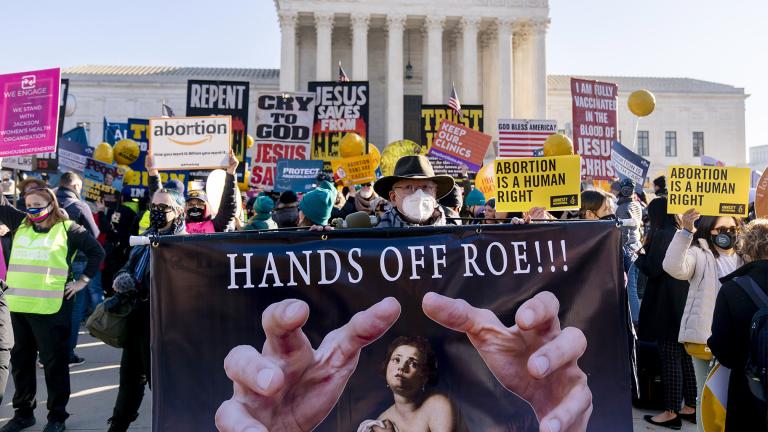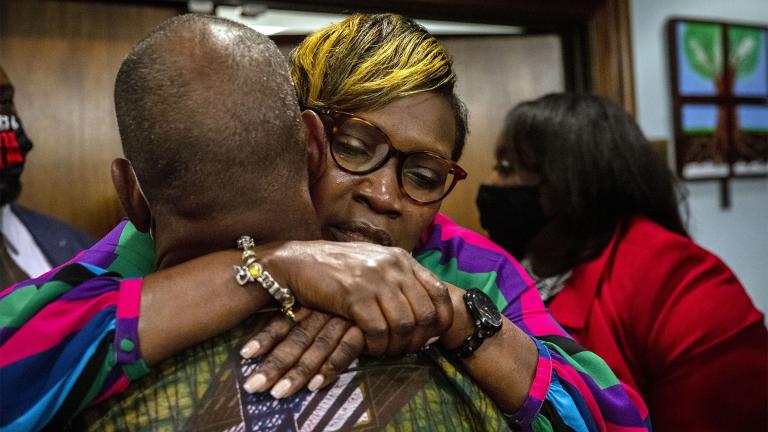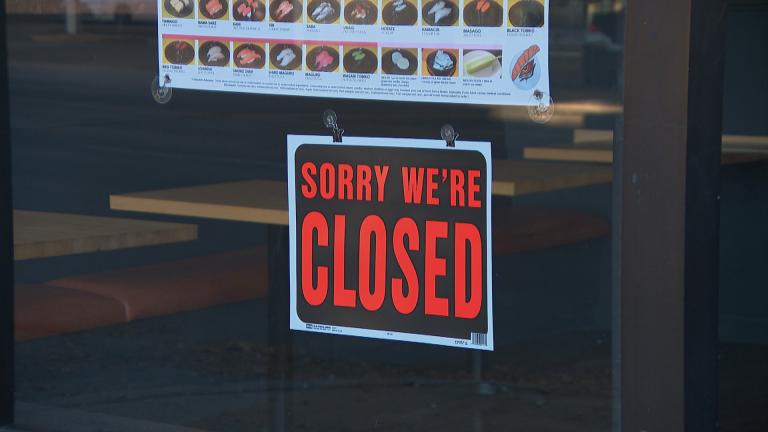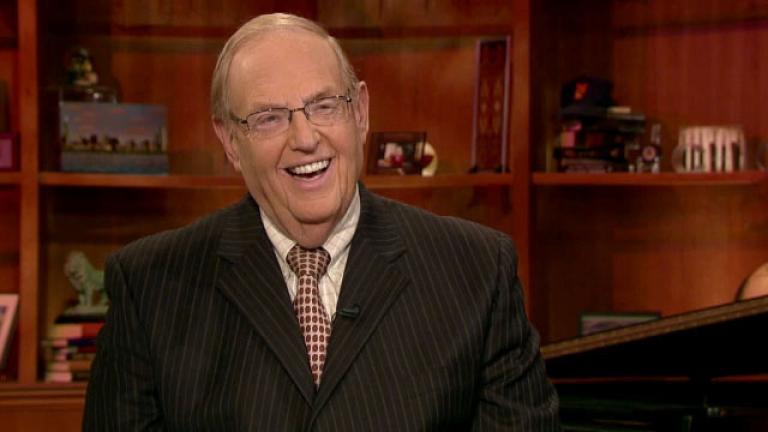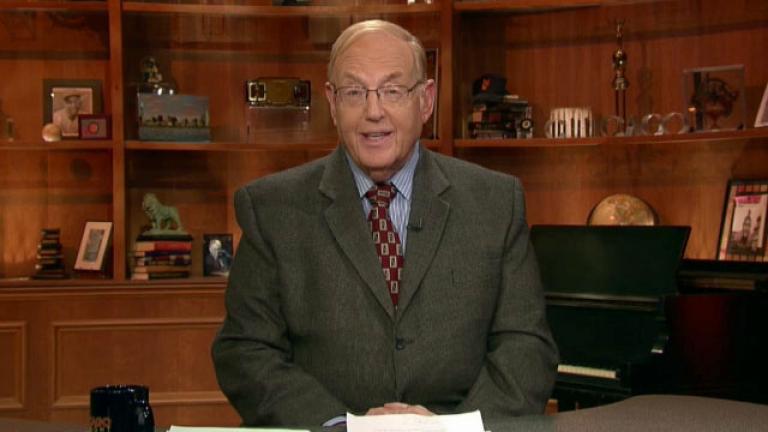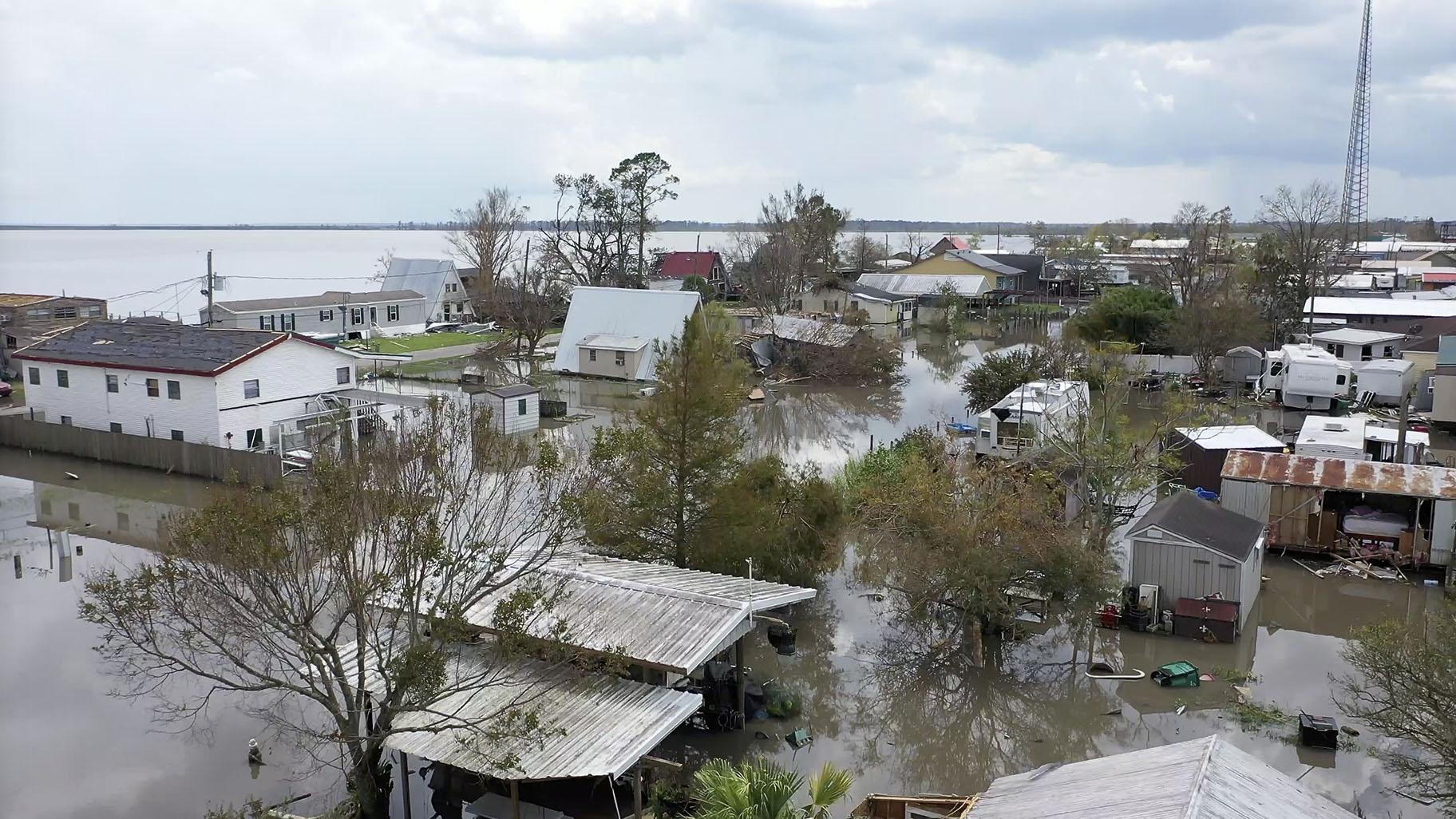 A view near the home of commercial crabber Roy Comardelle, who built a levee around his property, is shown at Des Allemands, La., Tuesday, Aug. 31, 2021. (AP Photo / Steve Helber, File)
A view near the home of commercial crabber Roy Comardelle, who built a levee around his property, is shown at Des Allemands, La., Tuesday, Aug. 31, 2021. (AP Photo / Steve Helber, File)
Melting glaciers, deadly floods in Germany, record high summer temperatures in generally mild Oregon, more urgent pleas for help from Pacific island nations. With growing urgency, the effects of climate change were felt around the world in 2021.
A United Nations climate conference in Glasgow, Scotland, in November — called COP26 — ended with almost 200 nations agreeing to a compromise aimed at keeping a key global warming target alive, but which contained a last-minute change that watered down language about phasing out coal.
While many nations complained the deal did not go far or fast enough, they said it was better than nothing and provided incremental progress.
Here, some Associated Press journalists involved in the coverage reflect on the story and their own experiences.
SETH BORENSTEIN, science writer, Washington, D.C.:
COP26 leaves us sort of where we were before. There’s a little bit more being done to try to control emissions, a lot more pledges to do stuff. But a lot of these pledges are still based very much in the future. These net-zero by 2050, 2060 pledges — these are pledges made by leaders who won’t be alive when their pledges become due.
This has also been an interesting year where you had a major climate report in August. But more than anything, it’s yet another year where climate change keeps popping up in extreme weather all over the world. But this year, perhaps a little bit more in the Western, richer countries than in the past: in Germany, in Belgium, horrible flooding in Tennessee, places like that. And not to mention the wildfires and 116-degree (47 Celsius) heat in Portland, Oregon. I mean, if you had to choose one weird thing, the Pacific Northwest is known for mildness, but there are records and then there are records, and theirs are so far off the scale that your eyes pop out. And that’s what Portland was.
Rich countries aren’t exempt. But when you’re rich, you can flee that more easily. You can weather weather extremes when you’re in the global North far better than you can in the South. But then, there come extremes that are so big, that wealth can’t help you as much.
And so that’s one of the issues of adaptation: the rich countries of the world can, and the poor countries can’t. And that was one of the major issues we saw in Scotland at the conference. What we saw ... is this sort of combination of hope because nations were saying the right thing and pledging the right thing to do that would help reduce emissions in the future. More so than they’ve ever done. And yet, the temperatures are still going up, the extremes are still getting worse. So you sort of have this combination of optimism — and there was a lot of optimism there — and also harsh reality smacking each other in the face. And you would ping-pong there from “Oh, this looks promising” to “Oh my God.”
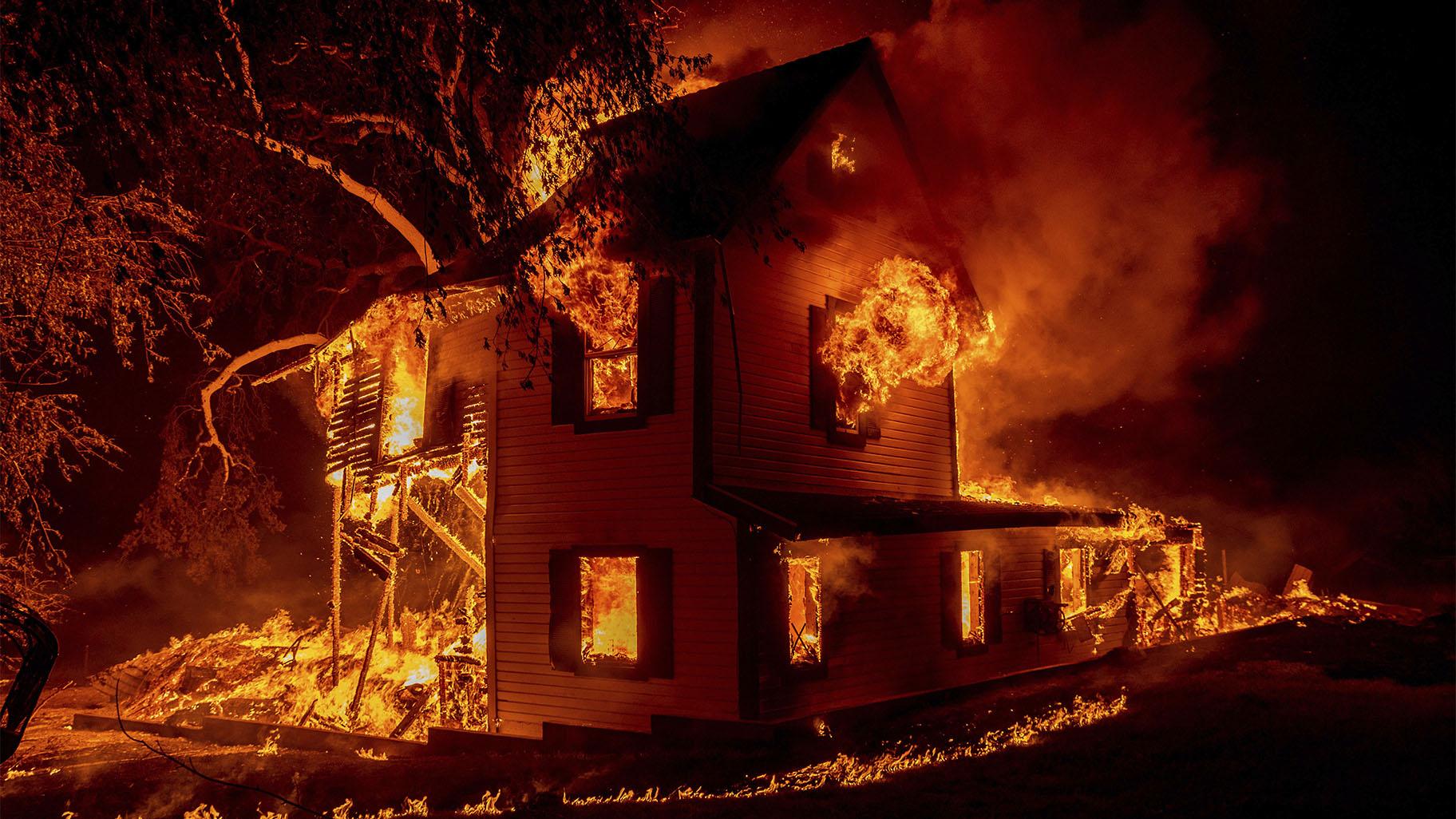 A home is engulfed in flames as the Dixie fire rages south of Janesville in Northern California, on Aug. 16, 2021. (AP Photo / Ethan Swope, File)
A home is engulfed in flames as the Dixie fire rages south of Janesville in Northern California, on Aug. 16, 2021. (AP Photo / Ethan Swope, File)
FRANK JORDANS, correspondent, Berlin:
Thinking about what was special about covering climate this year, it struck me that normally, covering climate change from Germany is a bit like covering a war 100 miles from the front line, right? Because you sort of think all the action is happening somewhere else. And it’s certainly true that most of the direst impact is happening in countries in what’s known as the global south. Or the far north, because that’s heating up much faster than anywhere else.
But this year, we had two events in Germany that were really quite striking. One of them was a Supreme Court decision in April here in Germany. Basically the court ruled that the government hadn’t done enough to chart the course that the country needs to set if it wants to cut greenhouse gas emissions fast enough to meet these Paris goals. And the judges basically said that they were putting too much of the strain on younger generations, pushing too much to beyond 2030. And they said that this was actually a restriction on freedoms of the younger generation. ... The judges in the Supreme Court here actually said that if we don’t tackle climate change, then core freedoms are going to be impinged upon. And by saying that, that was a hugely significant moment that could change the trajectory of how future governments see things.
The second one was these floods that Seth mentioned in Germany and Belgium. Certainly, there are occasional floods here, but nothing like what we saw in July. And while some people said, well, we should have seen this coming, really, the general population was not prepared for this. And it really woke people up to see almost 200 people killed in a matter of hours, and entire villages swept away. In a country like Germany, I mean, they can afford to rebuild, but it’s still billions (in damages) in one devastating flood.
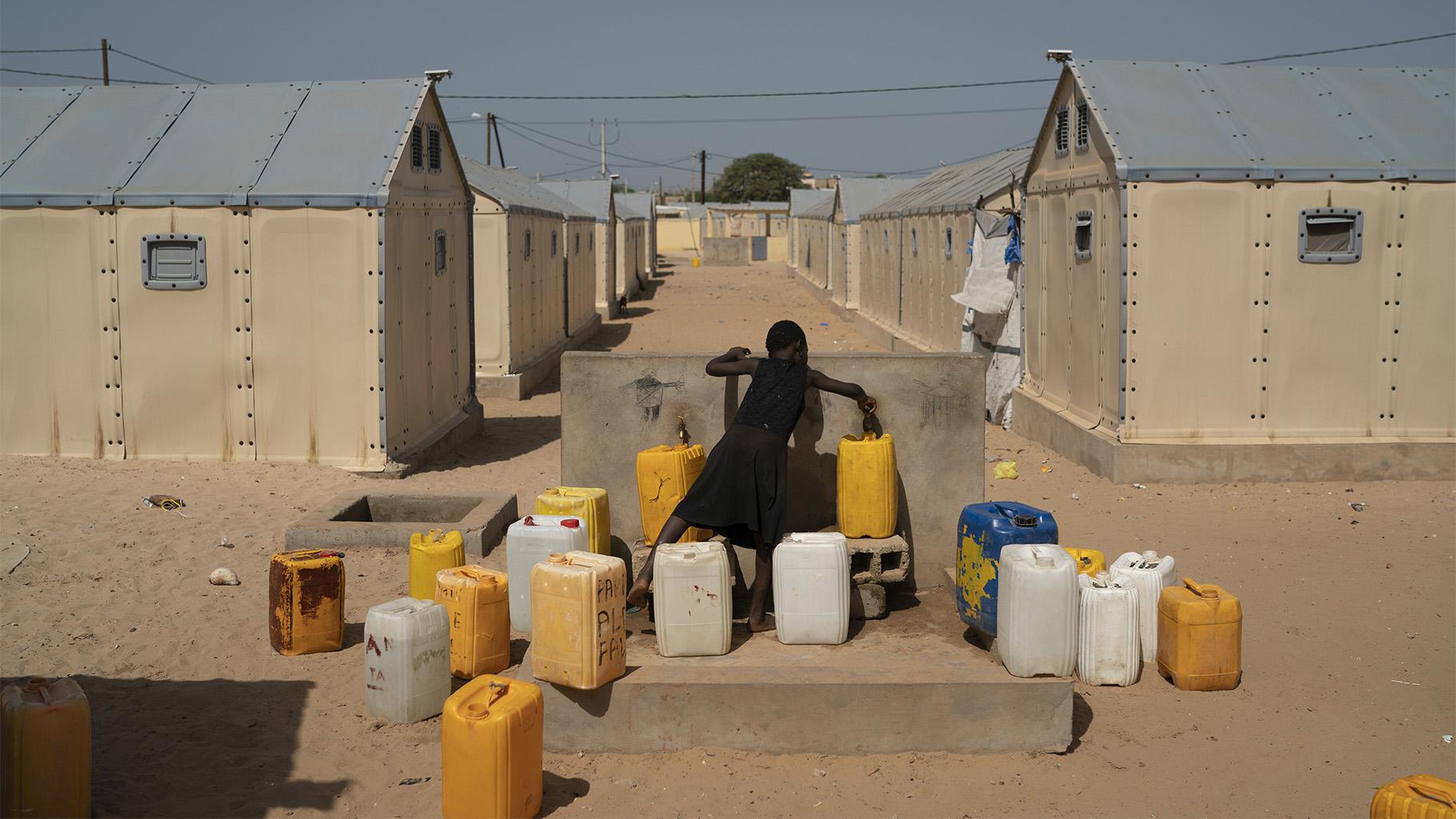 A young girl fills water containers at a camp for internally displaced people who lost their coastal homes to erosion from the Atlantic Ocean in Saint Louis, Senegal, Thursday, Nov. 4, 2021. (AP Photo / Leo Correa, File)
A young girl fills water containers at a camp for internally displaced people who lost their coastal homes to erosion from the Atlantic Ocean in Saint Louis, Senegal, Thursday, Nov. 4, 2021. (AP Photo / Leo Correa, File)
NOAH BERGER, photographer, San Francisco:
I’ve been a news photographer for 26 years, so I’ve done a bunch wildfires here and there. But really, 2013’s Rim Fire near Yosemite was the first one that got me focused on this as a specialty. I went out there and spent a few days there with a colleague from Getty, we were riding around, and I just loved being out there.
In California, we have press access to emergency zones. .... So, when I started, it was more an issue of how close you could get yourself because I didn’t have all the tools that I have now. It was harder to know the right spots to be in, but it was a powerful experience. And after that, I said, this is what I want to do with my summers and falls. And every year since then, I’ve really ramped up the gear that I use, the knowledge I have, the interactions with firefighters. Whether it’s something physical, like a carbon monoxide detector for the car, or fire shelter, or a better understanding of firefighting techniques.
Every year I’ve increased my fire knowledge. And it’s worked out well, because our fires have also ramped up incredibly. Every year since then, with a couple exceptions, you just see new superlatives: more homes, more lives lost, more intensity. Especially since about 2015.
The firefighters are easy to interact with. I’m dressed like a firefighter. I know the lingo. You know, I pull up and they know I’m not a firefighter, but I also blend in. ... I always have a hard time with (civilians). I mean, we go up to somebody, and usually it’s somebody who’s either fleeing their home as flames bear down, in immediate danger or returning to their leveled home. And it’s really hard to go up to people as a human. You know, it’s one of the worst days of their lives and you say, “Hey, can I hang out with you?”
I think the intensity has been startling for all of us, and how much it’s increased. I don’t know what percentage you can put on climate change, what percentage on PG&E, what percent on the bark beetle tree mortality, which was part of the drought here, where a lot of trees have are very flammable and combustible. But it’s pretty indisputable that the fires have definitely intensified. I think you could look up the exact figure. But, according to CalFire, our state firefighting agency, 15 out of 20 of California’s most destructive wildfires have occurred in the last six years. It’s a very striking statistic. I’ve only been doing this for eight years, and I’ve covered 14 of the 20 most destructive wildfires in California history.

